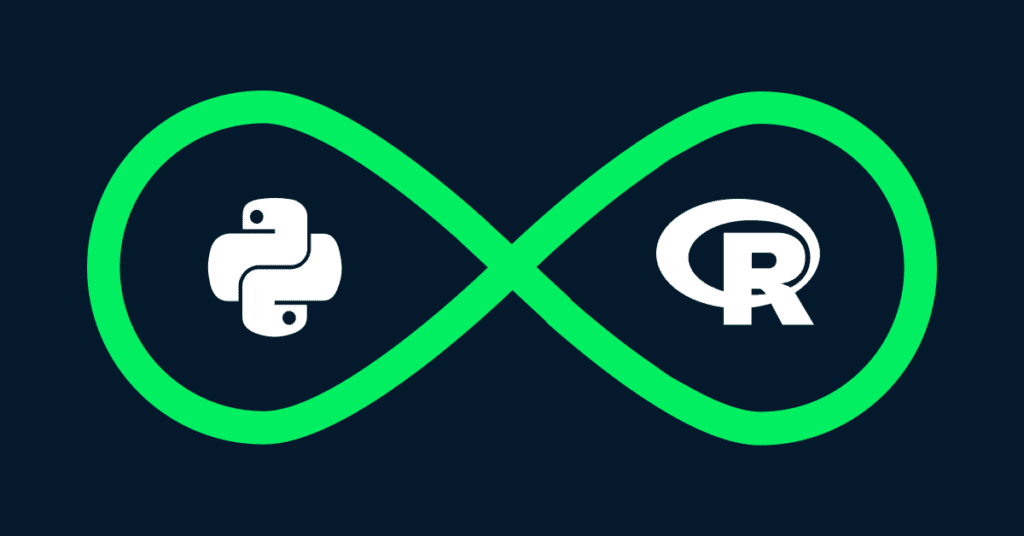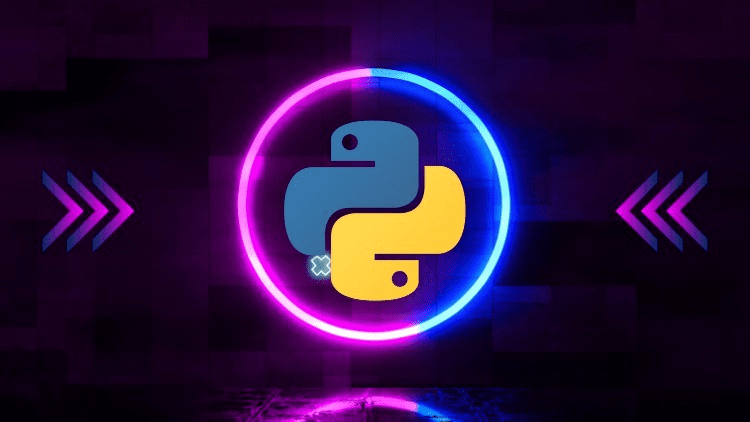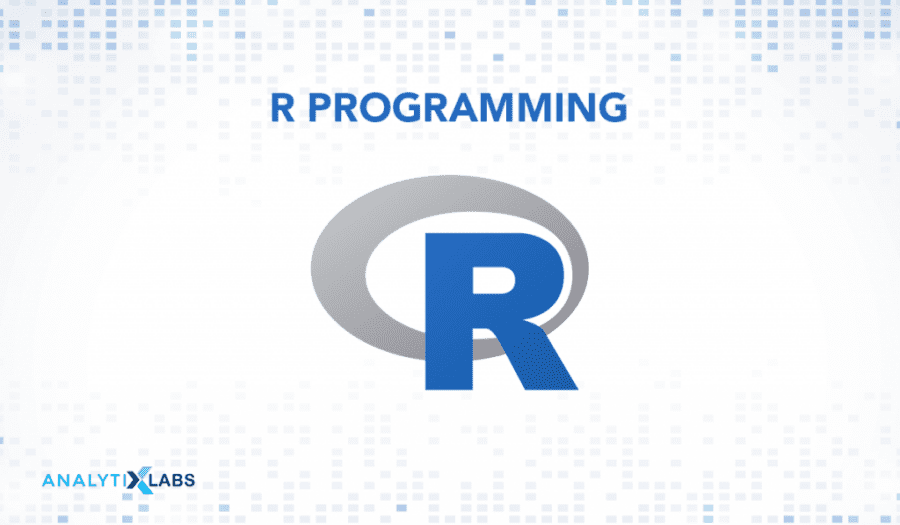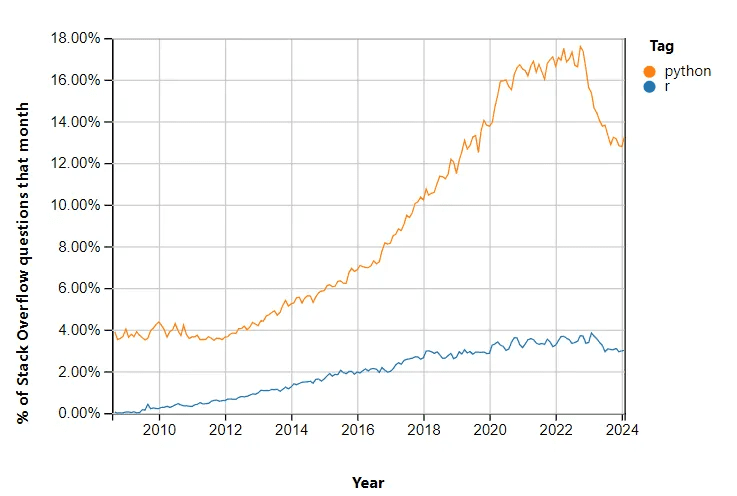Welcome to another comparison article where you will understand the features, intricacies, pros, and cons of two different stacks of the information technology industry.
Today’s comparison blog is especially for data scientists who spend their day and night with datasets, insights, trends, and analysis of many other factors. From a long list of skills that data scientists and analysts must master, one is the programming language.
You might have seen data analysts working with SQL to communicate with databases, but with SQL they can’t manipulate data. Then how do you clean, analyze, filter, and visualize data from large datasets?
All this chaos can be tackled using a programming language like Python or R. Now another question arises, which programming language from both? No need to worry, I’m here to explain every inch of both stacks that will help you make a wise decision.
Before that, if you are a beginner and want to learn Python or R for your future, you need to stick to this article to the end. But if you are an entrepreneur or a business owner looking for data analysis or something like that, consult a software development company having expertise in data science.
Python vs R – The basics

Python undoubtedly was the 3rd most popular programming language for 2024 and is going to top the chart in 2025. On the other hand, R is famous for its top-notch features like data visualization, statistical computing, etc.
Python and R both are free-to-use languages with compatibility to run on operating systems such as Windows, macOS, and Linux. Both can perform data analysis tasks and are easy to learn. So what’s the difference?
Let’s get into it!
What is Python?

Python is a general-purpose programming language known for its simplicity and easy syntax. Further, it mimics the natural language and is easy to learn for beginners.
Python is best for:
- Web application development
- For handling data science and data analysis tasks
- Automation
- Machine learning, artificial intelligence, etc.
What is R?

R is also a programming language, especially useful for statistical computing and data visualization. It comes with various installation packages, reusable code, documentation, etc. Moreover, data mining, bioinformatics, and data analytics are the common fields that leverage R.
R is best for:
- Data manipulation
- Statistical analysis
- Data visualization
Python vs R – A quick rundown
| Aspects | Python | R |
| Purpose | General-purpose language | Best for statistical analysis |
| Release Year | 1991 | 1993 |
| Language Type | High-level programming language | Low-level programming language |
| Learning Curve | Easy to learn | Easy to learn |
| Speed | Faster than R | Slower than Python |
| Popularity | Very popular among developers’ community | Less popular than Python |
| Popular Use Cases | Dropbox, Walt Disney, Bit Torrent, Reddit, etc. | Ford, Facebook, Zillow, Google, etc. |
Python vs R – The core comparison
Python and R, both are the top choices when it comes to data analytics tasks. Both are in-demand and easy to learn which makes them perfect for beginners. So, to understand which one is better, you will need to have a solid understanding of the below things.
Here are the things to consider:
Purpose
The purpose of creating both languages was different. One was created as a general-purpose programming language and the other was specifically for statistical analysis. However, both have come to a point which makes them better for data science tasks.
However, Python is more famous than R due to its versatility. Not only in data science but also in web development, software development, and game development uses the power of Python.
Case study of Python: Spotify enhanced user experience with data analytics using Python.
Spotify faced the challenge of balancing accuracy and speed. They had to deal with millions of users’ data and ensure they were getting the right recommendations. Thus, they employed Python and eliminated this issue. Read the complete case study here!
Learning curve
Both are fairly easy to learn. The choice will depend on the background. If you have a background in Java or C++, you will opt for Python. While having a background in statistics will lead you to choose R.
Overall, both are easy to learn, and understand and provide a smoother learning experience.
Popularity

From the given graph, we can safely say that Python is way more popular than R. Python is consistently beating R, especially in recent years. Moreover, Python ranks # 1 in many programming language indexes.
It is since Python is not only limited to data science, it excels in web development, machine learning, and various other fields. While R is mostly seen in data science, academics, and statistical analysis.
Speed
Finally, let’s learn about speed. In terms of speed, Python is a high-level programming language able to render data quickly. Comparatively, R is a low-level language, slower than Python.
Do you know the difference between high-level and low-level programming languages? If not, learn here!
Summary
In conclusion, you must have understood the differences between Python and R. Hence, understanding the differences will help you make a wise decision according to your requirements. Moreover, both languages are easy to learn and beginners can pursue a career in both.
